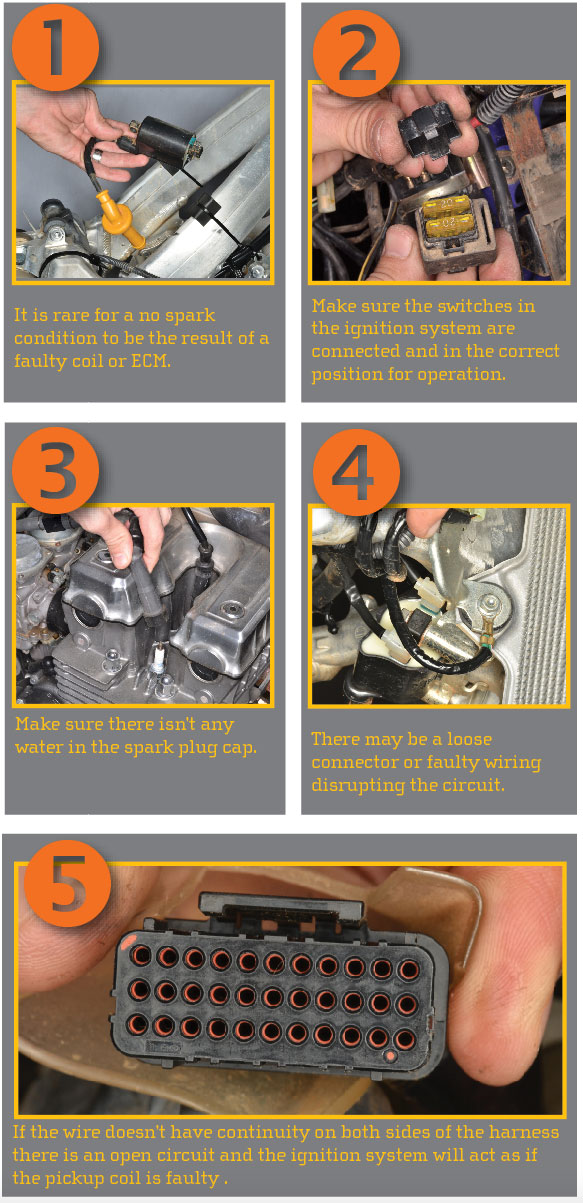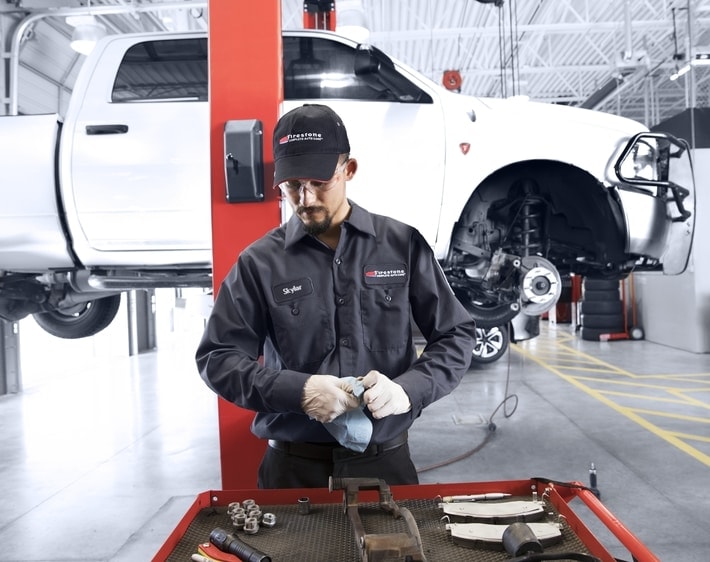Can a Bad Ignition Switch Cause No Spark
Yes, a faulty ignition switch can lead to a no-spark condition. It interrupts the electrical flow needed for ignition.
Encountering a no-spark situation in your vehicle can point to several culprits, with the ignition switch being a common suspect. The ignition switch plays a pivotal role in powering your car’s ignition system, fuel system, and electrical accessories. A malfunctioning ignition switch fails to initiate the complex sequence of events required to ignite the fuel-air mixture in the engine.
This disruption in the electrical circuit may leave you with an engine that cranks but won’t start. Regular wear and tear, along with damage from exposure to moisture or overheating, can compromise the integrity of the ignition switch. Diagnosing this issue promptly is vital because it affects not just the vehicle’s operability but its overall safety. Mechanics often investigate this component when faced with ignition-related problems to ensure a vehicle remains reliable on the road.

Credit: www.cyclepedia.com
Symptoms Of A Failing Ignition Switch
Spotting the signs of a faltering ignition switch is crucial. This vital component kick-starts your vehicle’s engine. When it fails, it’s often without warning. Understanding the symptoms helps you address the issue before it leads to a no-spark situation and potentially leaves you stranded.
Engine Stalling Issues
Unexpected engine shutdowns top the list of ignition switch failure signs. This can occur while driving at any speed. A bad ignition switch fails to maintain the circuit continuity needed to keep the engine running. Let’s dissect this critical symptom:
- Cuts power to the engine: The car may suddenly stop, posing a safety risk.
- Intermittent power loss: The car might stutter or hesitate before stalling.
Difficulty Powering On The Vehicle
Turning the key should be all it takes. With a failing ignition switch, it’s not always so simple. Key indicators include:
- Multiple attempts needed: You may have to try several times before the engine ignites.
- Weakened dashboard lights: Signs of a bad switch can also be dim or flickering dashboard lights.
If these issues sound familiar, don’t delay. Addressing a faulty ignition switch early on prevents more serious problems. Regular maintenance and awareness are your best defenses against a no-spark situation. Keep your vehicle on the move by staying vigilant to these warning signs.
The Role Of The Ignition Switch In Starting A Car
Imagine a diligent conductor of an orchestra, cuing in each instrument to play. In a car, the ignition switch performs a similar job. It cues the engine to start by connecting the right wires and pathways when you turn your key. This small component has a massive task. It controls the power to many critical systems necessary to start your car. Without it, the car stays silent and immobile.
Electrical Pathways And Spark Generation
A vehicle’s heartbeat starts with a spark, and the ignition switch holds the key to this vital pulse. When you turn the key, the ignition switch activates. It creates a chain of events that ends with the engine coming to life. Electrical pathways, like veins and arteries in the human body, carry the current from the switch to the engine. A good ignition switch ensures:
- Power flows to the engine control unit (ECU)
- Current reaches the starter motor
- Spark plugs receive electricity to ignite the fuel
If these steps fail, the car will not start. A bad ignition switch breaks the connection. No electricity means no spark, and no spark means no start.
Ignition Switch And Distributor Interaction
The ignition switch doesn’t work alone. It sends power to the distributor, which shares out electricity to each spark plug. Picture a mailroom in a large company, sorting letters to various departments. That is what the distributor does with the electric current. For optimal performance, the ignition switch and distributor must communicate perfectly. A bad switch sends wrong signals or no signals at all. This miscommunication can lead to no spark being generated, causing the engine to fail its start-up performance.
Regular check-ups are vital to catch issues early on. Keep a lookout for signs that hint at ignition switch problems:
- Car stalling
- Difficulty in starting
- No engine noise when key turns
Early detection can save the conductor of your car’s orchestral performance from falling silent.
How A Faulty Ignition Switch Can Prevent Sparking
Your vehicle’s ignition system plays a crucial role in starting your car and keeping it running smoothly. At its heart is the ignition switch, a component that may seem small but is mighty in function.
Understanding how a defective ignition switch can lead to a no-spark situation is essential for timely diagnosis and repair.
Interrupted Electrical Circuit
The ignition switch is key to an engine’s lifeblood – electricity. It redirects current from the battery to various vehicle systems, including the spark plugs. A breakdown in this pathway can mean no spark to ignite the fuel.
- Power Distribution: The switch controls power distribution.
- Signal Transmission: It sends signals to ignite the engine.
- Connection Loss: Faults in the switch sever these vital connections.
Wear And Tear Impact On Spark Production
Regular use leads to wear and tear, and the ignition switch is no exception. Components within the switch can degrade over time, directly affecting spark production.
| Component | Function | Wear Impact |
|---|---|---|
| Contact Points | They bridge electrical circuits. | Corrosion can interrupt the flow. |
| Wiring | Wires deliver power. | Frays or breaks cause misfires. |
| Spring Mechanism | Ensures smooth operation. | Weak springs prevent proper engagement. |
Proper maintenance and timely repairs can keep the ignition switch from becoming the culprit of a no-spark issue. Always consult with a professional when ignition switch issues arise.

Credit: www.youtube.com
Diagnosing The Ignition System For Spark Failures
Is your car refusing to start, and you suspect no spark from the ignition system? You’re not alone. Many drivers face this issue. Understanding how the ignition system works is crucial. But, diagnosing it can be tricky. Here’s how to check if a bad ignition switch is causing the spark failures.
Start with a visual check of the ignition switch. Look for these signs:
- Damaged wiring
- Burn marks
- Wear and tear
These can indicate a problem. Ensure all connections are secure and wires are intact.
Next, use a multimeter to test the ignition components. This tool checks for electrical faults. Here’s a simple guide:
- Set the multimeter to the ohms setting.
- Locate the ignition coil and disconnect it.
- Place probes on the coil’s terminals.
- Compare the readings with the manual’s specifications.
A discrepancy in readings can signal a coil issue. Follow similar steps to test the ignition switch and other components.
Note: Always consult your vehicle’s manual before testing. Each model may have specific testing procedures.
| Component | Normal Reading | Action if Faulty |
|---|---|---|
| Ignition Coil | Refer to manual | Replace coil |
| Ignition Switch | Refer to manual | Repair or replace |
Remember, diagnosing ignition problems can be intricate. If you’re uncertain, consider seeking professional help. Timely diagnosis prevents further engine damage.
Repairing Or Replacing A Bad Ignition Switch
Repairing or Replacing a Bad Ignition Switch is crucial when it comes to your vehicle’s ability to start and run properly. A faulty ignition switch can lead to a no-spark condition, leaving your car unable to ignite the fuel/air mixture in the combustion chamber. Fortunately, with the right tools and a bit of patience, you can either repair or replace the ignition switch yourself.
Step-by-step Guide On Replacement
Replacing a bad ignition switch is a manageable task if you follow these steps:
- Disconnect the battery to prevent any electrical shorts or shocks.
- Remove the steering column cover to access the ignition switch.
- Mark the current position of the ignition switch to ensure proper alignment during reinstallation.
- Unfasten the switch from its position using the appropriate tools.
- Detach the wiring harness connected to the ignition switch.
- Install the new switch by reversing the removal process.
- Reconnect the battery and test the new ignition switch.
Ensuring Proper Connection For Spark Restoration
After replacing the ignition switch:
- Inspect all connections to ensure they’re tight and secure.
- Check for damaged wiring that could prevent the spark.
- Test the ignition switch for proper operation.
Ensuring that everything is reconnected correctly can help restore the necessary spark for your vehicle to start. Ignition switch installation can be intricate, so consult a professional if you’re unsure.

Credit: www.wikihow.com
Preventative Measures And Regular Maintenance
Keeping your car in top shape is crucial. It helps avoid the dreaded no-spark scenario often linked to a bad ignition switch. Regular check-ups can prevent this issue. Let’s deep dive into routine maintenance that can keep you off the towing truck’s hook and on the road instead.
Routine Checks For Electrical System Health
Regular inspections of your car’s electrical system are vital. They ensure everything works as it should. Below are essential steps to follow during check-ups:
- Inspect the ignition switch: Look for signs of wear and tear.
- Test the battery: A weak battery might strain the ignition system.
- Check the starter motor: It should turn over smoothly.
- Review wiring and connections: Look for corrosion or loose wires.
- Key turns but engine won’t start: The ignition switch might be faulty.
- Car stalls while driving: It could be an electrical system issue.
- Electrical components fail: This could signal a deeper problem.
- Intermittent spark losses: Professional diagnostics are required.
When To Seek Professional Mechanic Assistance
Some car issues are beyond DIY fixes. Recognize these signs to know when to call a mechanic:
Take action the moment you suspect a spark-related issue. Prompt attention from a trained professional can save time and money.
Frequently Asked Questions Of Can A Bad Ignition Switch Cause No Spark
Can A Faulty Ignition Switch Cause Spark Failure?
A malfunctioning ignition switch can indeed cause a no-spark condition in your engine. The ignition switch is responsible for delivering power to the ignition system. If it’s faulty, this vital connection is disrupted, leading to a lack of spark.
What Are Symptoms Of A Bad Ignition Switch?
Typical symptoms of a bad ignition switch include stalling, starting difficulties, flickering dashboard lights, and an inability to start the engine. These signs can point to a failing switch that needs inspection.
How Does An Ignition Switch Affect Engine Performance?
The ignition switch plays a crucial role in engine performance by controlling the power flow to the ignition system. A defective switch may hinder electrical flow, causing misfires, rough idling, or a no-start condition.
Can Ignition Switch Issues Be Diagnosed At Home?
Yes, some ignition switch issues can be diagnosed at home with vigilance to the symptoms like starting troubles or erratic behaviors of the electrical components. However, electrical diagnostics may require professional tools and expertise.
Conclusion
As we’ve explored, a faulty ignition switch can indeed be the culprit behind a lack of spark in your vehicle. Prioritizing regular maintenance can help prevent such issues. If symptoms arise, prompt attention from a professional is key. Remember, a smooth start depends on a reliable ignition system.
Keep yours in check to ensure a seamless journey every time.





